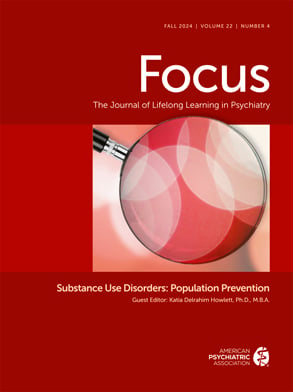Evaluating Three Treatments for Borderline Personality Disorder: A Multiwave Study
Abstract
Objective
Method
Results
Conclusions
Method
Participants
Assessments and Procedures
Domains of outcome
| Measure | Outcome Domain |
|---|---|
| Overt Aggression Scale-Modified (34) | Suicidality |
| Anger, Irritability, and Assault Questionnaire (35) | Aggression |
| Barratt Impulsiveness Scale-II (29) | Impulsivity |
| Brief Symptom Inventory (36) | Anxiety |
| Beck Depression Inventory (37) | Depression |
| Global Assessment of Functioning Scale (18) | Social Adjustment |
| Social Adjustment Scale (38) | Social Adjustment |
Treatment and therapists
Statistical Analysis of Change
Results
Patient Characteristics
| Characteristic | N | % |
|---|---|---|
| Gender | ||
| Women | 83 | 92.2 |
| Men | 7 | 7.8 |
| Marital status | ||
| Married | 7 | 7.7 |
| Divorced | 40 | 44.4 |
| Living with partner | 11 | 12.2 |
| In relationship | 21 | 23.3 |
| Education | ||
| Less than high school | 3 | 3.3 |
| High school graduate | 7 | 7.8 |
| Some college | 28 | 31.1 |
| Associate’s degree | 6 | 6.7 |
| College degree | 29 | 32.2 |
| Graduate training | 17 | 18.9 |
| Employment | ||
| Full-time | 30 | 33.3 |
| Part-time | 23 | 25.6 |
| Ethnicity | ||
| Caucasian | 61 | 67.8 |
| African American | 9 | 10.0 |
| Hispanic | 8 | 8.9 |
| Asian | 5 | 5.6 |
| Other | 7 | 7.8 |
| Lifetime axis I disorders | ||
| Any mood disorder | 69 | 76.7 |
| Any anxiety spectrum disorder | 43 | 47.8 |
| Any eating disorder | 30 | 33.3 |
| Drug/alcohol abuse/dependence | 34 | 37.8 |
| Suicidal behavior | ||
| Prior suicidal behavior | 51 | 56.7 |
| Prior parasuicidal behavior | 56 | 62.2 |
| No history of suicidal/parasuicidal behavior | 15 | 16.7 |
Medication Treatment
Individual Growth Curve Analyses
| Measure and Treatment Type | Elevation (Intercept) of Individual Trajectory (B0i) | Rate of Change (Slope) of Individual Trajectory (B1i) | ||||
|---|---|---|---|---|---|---|
| Fixed-Effect Coefficient | p | Effect Size r | Fixed-Effect Coefficient | p | Effect Size r | |
| Depression (Beck Depression Inventory [37]) | ||||||
| Transference-focused psychotherapy | 33.41 | 0.001 | 0.93 | −0.55 | 0.001 | 0.50 |
| Dialectical behavior therapy | 35.91 | 0.001 | 0.91 | −0.59 | 0.003 | 0.38 |
| Supportive treatment | 34.91 | 0.001 | 0.93 | −0.69 | 0.001 | 0.49 |
| Anxiety (Brief Symptom Inventory [36]) | ||||||
| Transference-focused psychotherapy | 50.03 | 0.001 | 0.98 | −0.34 | 0.004 | 0.37 |
| Dialectical behavior therapy | 53.23 | 0.001 | 0.97 | −0.57 | 0.001 | 0.50 |
| Supportive treatment | 49.16 | 0.001 | 0.98 | −0.40 | 0.001 | 0.48 |
| Functioning (Global Assessment of Functioning Scale [18]) | ||||||
| Transference-focused psychotherapy | 52.84 | 0.001 | 0.95 | 0.59 | 0.001 | 0.44 |
| Dialectical behavior therapy | 52.21 | 0.001 | 0.96 | 0.67 | 0.004 | 0.36 |
| Supportive treatment | 50.22 | 0.001 | 0.96 | 0.62 | 0.001 | 0.43 |
| Suicidality (Overt Aggression Scale-Modified [34]) | ||||||
| Transference-focused psychotherapy | 1.20 | 0.001 | 0.57 | −0.05 | 0.01 | 0.33 |
| Dialectical behavior therapy | 2.17 | 0.001 | 0.59 | −0.09 | 0.01 | 0.34 |
| Supportive treatment | 0.84 | 0.001 | 0.44 | −0.03 | b | 0.18 |
| Social adjustment (Social Adjustment Scale [38]) | ||||||
| Transference-focused psychotherapy | 4.47 | 0.001 | 0.92 | −0.04 | 0.03 | 0.28 |
| Dialectical behavior therapy | 4.75 | 0.001 | 0.92 | −0.09 | 0.001 | 0.44 |
| Supportive treatment | 5.04 | 0.001 | 0.98 | −0.09 | 0.001 | 0.59 |
| Barratt Factor 1 | ||||||
| Transference-focused psychotherapy | 29.90 | 0.001 | 0.97 | −0.01 | b | 0.01 |
| Dialectical behavior therapy | 31.92 | 0.001 | 0.97 | −0.17 | b | 0.18 |
| Supportive treatment | 29.87 | 0.001 | 0.93 | −0.09 | b | 0.17 |
| Barratt Factor 2 | ||||||
| Transference-focused psychotherapy | 13.41 | 0.001 | 0.96 | −0.09 | 0.005 | 0.36 |
| Dialectical behavior therapy | 13.73 | 0.001 | 0.91 | −0.05 | b | 0.14 |
| Supportive treatment | 13.32 | 0.001 | 0.96 | −0.03 | b | 0.12 |
| Barratt Factor 3 | ||||||
| Transference-focused psychotherapy | 21.02 | 0.001 | 0.96 | −0.06 | b | 0.16 |
| Dialectical behavior therapy | 19.62 | 0.001 | 0.93 | −0.02 | b | 0.05 |
| Supportive treatment | 20.55 | 0.001 | 0.97 | −0.10 | 0.02 | 0.31 |
| Irritability | ||||||
| Transference-focused psychotherapy | 1.92 | 0.001 | 0.94 | −0.03 | 0.01 | 0.33 |
| Dialectical behavior therapy | 1.61 | 0.001 | 0.89 | −0.01 | b | 0.11 |
| Supportive treatment | 1.63 | 0.001 | 0.86 | −0.02 | b | 0.16 |
| Anger | ||||||
| Transference-focused psychotherapy | 1.74 | 0.001 | 0.87 | −0.06 | 0.001 | 0.44 |
| Dialectical behavior therapy | 1.52 | 0.001 | 0.80 | −0.03 | b | 0.25 |
| Supportive treatment | 1.34 | 0.001 | 0.82 | −0.03 | 0.05 | 0.28 |
| Verbal assault | ||||||
| Transference-focused psychotherapy | 1.80 | 0.001 | 0.94 | −0.04 | 0.001 | 0.43 |
| Dialectical behavior therapy | 1.55 | 0.001 | 0.87 | −0.02 | b | 0.21 |
| Supportive treatment | 1.49 | 0.001 | 0.88 | −0.02 | b | 0.19 |
| Direct assault | ||||||
| Transference-focused psychotherapy | 0.82 | 0.001 | 0.72 | −0.02 | 0.05 | 0.26 |
| Dialectical behavior therapy | 0.73 | 0.001 | 0.56 | −0.002 | b | 0.01 |
| Supportive treatment | 0.72 | 0.001 | 0.64 | 0.001 | b | 0.01 |
Discussion
References
Information & Authors
Information
Published In
History
Authors
Metrics & Citations
Metrics
Citations
Export Citations
If you have the appropriate software installed, you can download article citation data to the citation manager of your choice. Simply select your manager software from the list below and click Download.
For more information or tips please see 'Downloading to a citation manager' in the Help menu.
View Options
View options
PDF/EPUB
View PDF/EPUBGet Access
Login options
Already a subscriber? Access your subscription through your login credentials or your institution for full access to this article.
Personal login Institutional Login Open Athens loginNot a subscriber?
PsychiatryOnline subscription options offer access to the DSM-5-TR® library, books, journals, CME, and patient resources. This all-in-one virtual library provides psychiatrists and mental health professionals with key resources for diagnosis, treatment, research, and professional development.
Need more help? PsychiatryOnline Customer Service may be reached by emailing [email protected] or by calling 800-368-5777 (in the U.S.) or 703-907-7322 (outside the U.S.).

